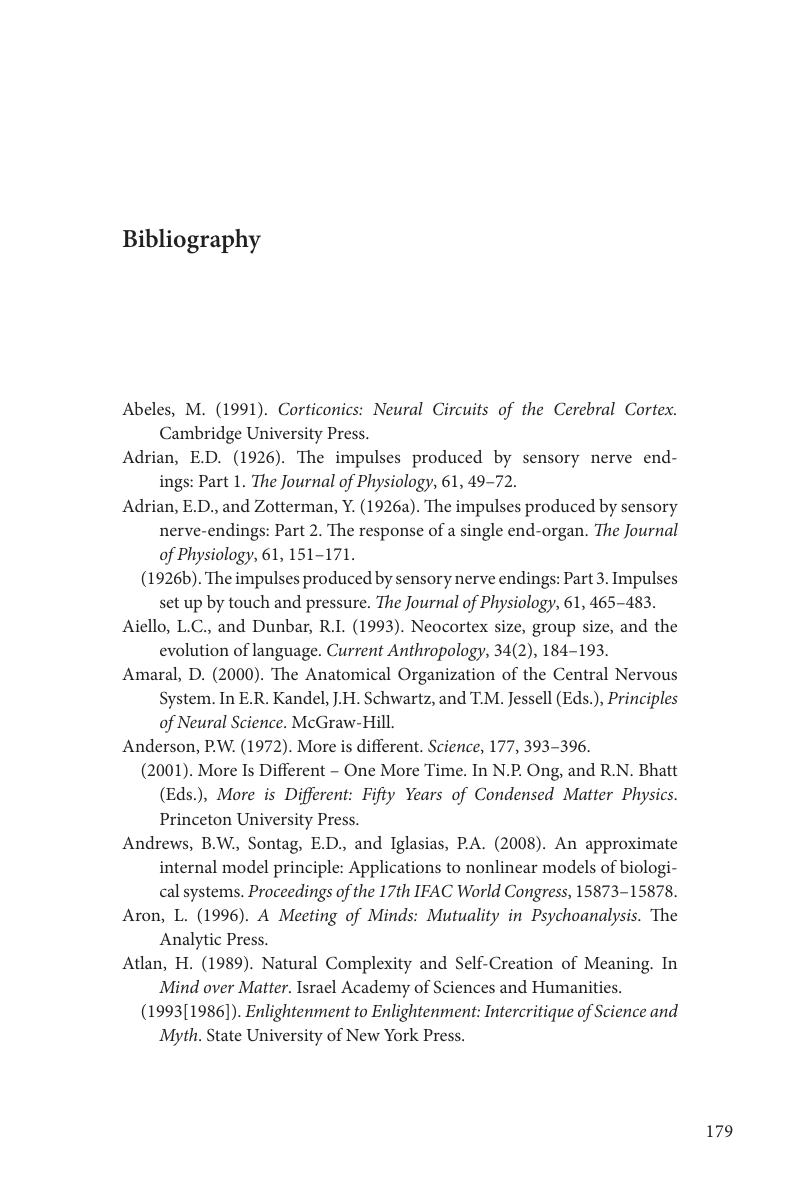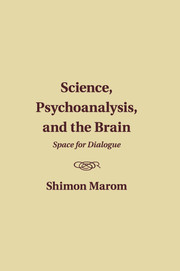Book contents
- Science, Psychoanalysis, and the Brain
- Science, Psychoanalysis, and the Brain
- Copyright page
- Dedication
- Dedication
- Contents
- Preface and Acknowledgments
- 1 A Lost Dialogue
- 2 Scales and Constraints
- 3 Language Relations
- 4 Relational Objects in Psychology
- 5 Reflections on Relational Physiology
- 6 Sempiterna Temptatio
- Bibliography
- Index
- References
Bibliography
Published online by Cambridge University Press: 05 May 2015
- Science, Psychoanalysis, and the Brain
- Science, Psychoanalysis, and the Brain
- Copyright page
- Dedication
- Dedication
- Contents
- Preface and Acknowledgments
- 1 A Lost Dialogue
- 2 Scales and Constraints
- 3 Language Relations
- 4 Relational Objects in Psychology
- 5 Reflections on Relational Physiology
- 6 Sempiterna Temptatio
- Bibliography
- Index
- References
Summary

- Type
- Chapter
- Information
- Science, Psychoanalysis, and the BrainSpace for Dialogue, pp. 179 - 190Publisher: Cambridge University PressPrint publication year: 2015



